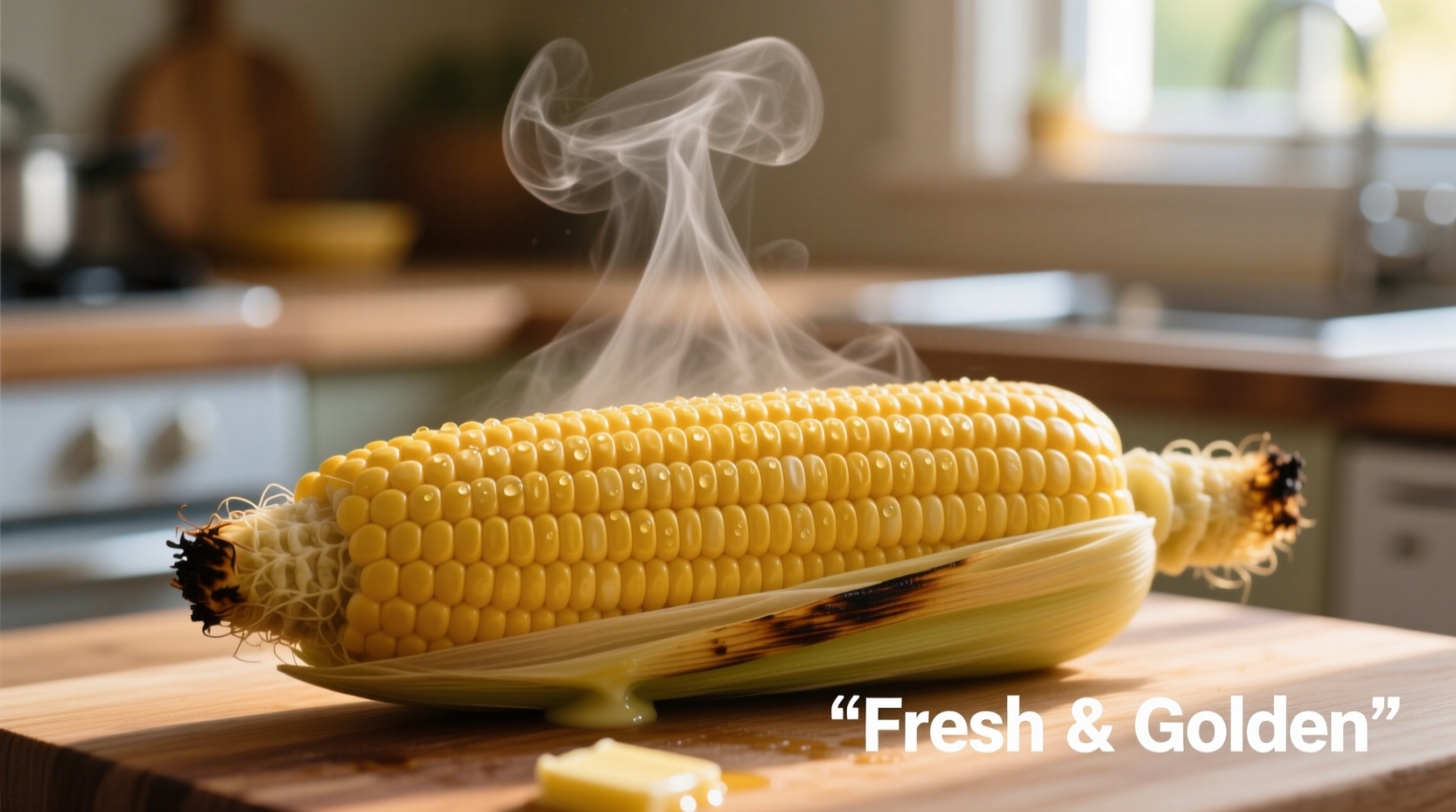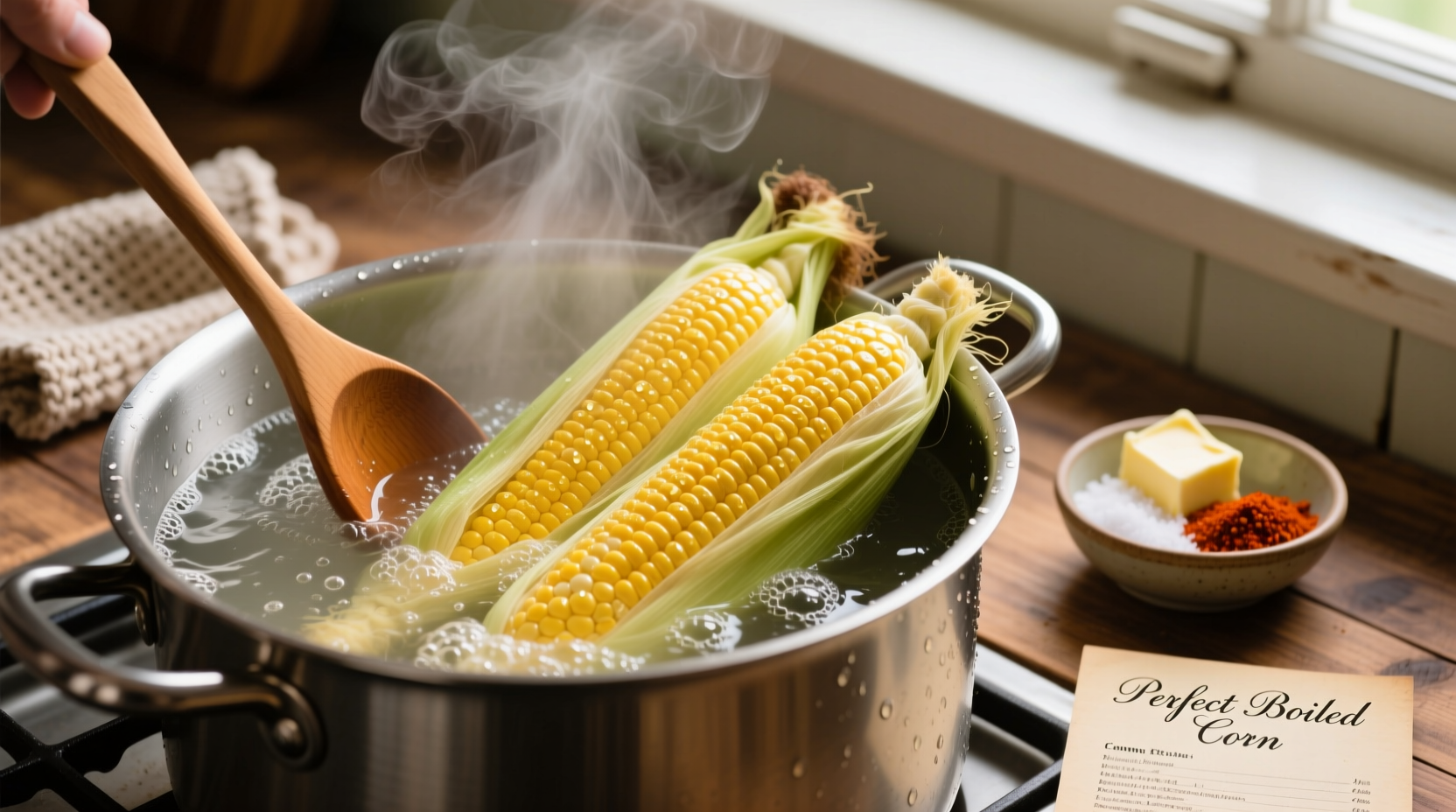The best way to cook fresh corn on the cob is boiling for 3-5 minutes in unsalted water. This preserves natural sweetness while achieving perfect tenderness without becoming mushy. Never add salt to the water as it can toughen kernels.
Mastering Fresh Corn: Your Complete Cooking Guide
Fresh corn on the cob transforms from ordinary to extraordinary with the right technique. Whether you've picked it up at the farmers market or grown it yourself, proper preparation makes all the difference between sweet, juicy kernels and disappointing results. This guide covers every method with precise timing and professional tips you won't find elsewhere.Selecting Peak-Perfection Corn
Your cooking journey starts before you even step into the kitchen. Choose ears with bright green, snug husks and moist, golden-brown silks. Avoid dry or blackened tips. The kernels should feel plump when gently pressed through the husk. For best flavor, use corn within 24-48 hours of purchase as sugars convert to starch rapidly after harvesting.| Cooking Method | Prep Time | Cooking Time | Best For |
|---|---|---|---|
| Boiling | 5 minutes | 3-5 minutes | Classic preparation, perfect texture |
| Grilling | 10 minutes | 10-15 minutes | Smoky flavor, summer barbecues |
| Microwave | 2 minutes | 3-4 minutes | Quick preparation, minimal cleanup |
| Oven Roasting | 5 minutes | 15-20 minutes | Cooking multiple ears simultaneously |
Boiling Method: The Classic Approach
Boiling remains the most reliable technique for perfect corn. Fill a large pot with enough water to cover the corn, but don't add salt - this common mistake actually toughens kernels. Bring water to a rolling boil, then carefully add husked corn using tongs.
Grilling for Smoky Flavor
For summer barbecues, grilling creates delicious caramelized spots. You have two options:- Husk-on method: Soak corn in cold water for 15 minutes, then grill over medium heat (350-400°F) for 15-20 minutes, turning occasionally
- Husk-off method: Brush shucked corn with oil, grill over medium-high heat for 8-12 minutes, turning frequently
Microwave: The Speed Champion
When time matters, microwaving delivers surprisingly good results. Leave corn in husk, trim any excess silk, and place on a microwave-safe plate. Cook on high for 3-4 minutes per ear. Let stand for 2 minutes before carefully removing husks (steam will be hot!). This method retains more nutrients than boiling according to a 2023 Cornell University food science study.Avoid These Common Corn Cooking Mistakes
Even experienced cooks make these errors that compromise your corn:- Adding salt to boiling water: Makes kernels tough rather than tender
- Overcooking: More than 5 minutes in boiling water turns corn mushy
- Removing all silks before cooking: Some chefs leave a few strands attached to prevent kernels from drying
- Using cold butter: Apply room-temperature butter for even coating
Serving Perfection: Beyond Basic Butter
Elevate your corn with these professional finishing touches:- Mix softened butter with fresh herbs like chives or parsley
- Create flavored salts using smoked paprika or chipotle powder
- Try a light drizzle of olive oil instead of butter for cleaner flavor
- Add a squeeze of fresh lime juice for brightness
Storing Leftover Corn
If you have cooked corn remaining, store it properly for best results. Place cooled corn in an airtight container in the refrigerator for up to 3 days. For longer storage, cut kernels from the cob and freeze in portion-sized containers for up to 6 months. Never store uncooked corn in plastic bags - use a damp paper towel in a perforated plastic bag to maintain humidity without trapping excess moisture.Frequently Asked Questions
How long should you boil corn on the cob?
Boil fresh corn for 3-5 minutes in unsalted water. This preserves natural sweetness while achieving perfect tenderness. Overcooking beyond 7 minutes makes corn tough and less flavorful according to USDA food safety guidelines.
Should you add salt when boiling corn?
No, never add salt to corn boiling water. Salt can toughen the kernels. Instead, season after cooking with salted butter or flavored salts. Professional chefs recommend using unsalted water for optimal texture.
How do you know when corn is done cooking?
Perfectly cooked corn has plump, juicy kernels that release milky liquid when punctured. The color becomes more vibrant yellow, and kernels feel tender but still slightly firm to the touch. Overcooked corn appears shrunken and feels mushy.
Can you cook corn in the microwave with the husk on?
Yes, microwaving corn in the husk is excellent. Soak briefly if husks are dry, then microwave for 3-4 minutes per ear. The husk steams the corn while protecting it from drying out. Let stand 2 minutes before carefully removing husks as steam will be hot.
How long does fresh corn last before cooking?
For best flavor, use fresh corn within 24-48 hours of purchase. Store uncooked corn in the refrigerator with husks intact, wrapped in a damp paper towel inside a perforated plastic bag. The sugars in corn convert to starch quickly after harvest, diminishing sweetness over time.











 浙公网安备
33010002000092号
浙公网安备
33010002000092号 浙B2-20120091-4
浙B2-20120091-4